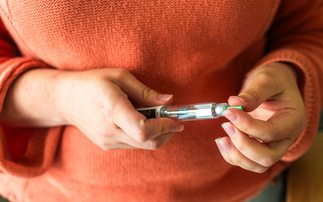A much misunderstood area, phobias can make sufferers' lives unbearable. Rachel Hanslope outlines the various forms phobias can take and details the implications for underwriters.
A phobia is a constant, obsessive, extreme, irrational or unrealistic fear of an animal, object, place or situation that would not normally worry the majority of people to the same degree.
This causes an overwhelming need to avoid any contact with the specific cause of the anxiety or fear. Even the thought of coming into contact with the cause of the phobia makes the sufferer anxious, with phobias often inducing a 'fight or flight' response and associated symptoms.
If it is unlikely or rare that the sufferer could be exposed to the object of their phobia, for example, snakes or dental treatment, it will not tend to affect their everyday life too much, although daily life can still be affected by thoughts of the subject causing anxiety symptoms. However, phobias such as agoraphobia and social phobia can make it more difficult to lead a normal life.
There are two types of phobias. 'Simple phobia' is about a single object, situation, or activity. Common examples are a fear of insects, heights, snakes, enclosed spaces, dentists or flying. If the sufferer has a simple phobia they may react with mild anxiety or even with panic when confronted with the prospect or thoughts of facing the source of their fear.
The second category is 'complex phobia'. Agoraphobia is an example of such a phobia. It involves several anxieties, including fear of entering shops, crowds, and public places, or of travelling on trains, buses, or planes. It also includes anxiety of being unable to immediately escape to a place of safety like home.
Social phobia is another example of a complex phobia. Social phobia is a fear of social or performance situations like a wedding or public speaking. Those with a social phobia have a fear of embarrassing themselves or of being humiliated in public. The symptoms are due to anxiety, and not secondary to other symptoms like delusions or obsessions. The anxiety is the direct result of being in particular situations, and avoidance of the phobic situations are a prominent feature.
fear of vulnerability
If an individual has a social phobia, the thought of being in public or appearing at social events will make them extremely anxious and frightened. It is because these types of situations make them feel vulnerable. This can lead to depressive symptoms, as the phobia can cause limited contact with the outside world and the sufferer can become introverted and lose perspective.
Paruresis, also known as 'bashful bladder' syndrome, is another type of social phobia. This anxiety disorder means being unable to use public toilets or urinate when others are nearby. It can make it hard to do normal activities, like going to work, social events or taking holidays.
Although a phobia is not usually described as an illness, the thought of coming into contact, or the actual contact with the feared object, place or situation can lead to panic. Panic can create real physical symptoms that include:
n Shaking
n Feeling confused or disorientated
n Rapid heart beats
n Dry mouth
n Intense sweating
n Difficulty breathing
n Feeling sick (nausea)
n Dizziness
n Chest pains
In extreme cases, especially if a sufferer has a complex phobia, they may experience the above symptoms as well as:
n A fear of losing control
n A fear of fainting
n A fear of dying
The symptoms of social phobias are similar but also include blushing, trembling or an urgent need to visit the toilet. The most common factor of a phobia is the need to avoid the animal, object, place or situation at all costs. This may mean that daily activities are limited.
Phobias usually develop in late childhood, adolescence, or early adult life in response to a frightening event or situation. However, it is not always clear where phobias come from. Occasionally, a simple phobia can be traced to an earlier experience. For example, a child who has experienced being trapped in an enclosed confined space may develop claustrophobia when they are older.
Sometimes, certain phobias like, for example, a fear of spiders, run in families. This is probably because children learn to fear, rather than inherit the phobia from a family member.
The causes of complex phobias, such as agoraphobia and social phobia, are unclear. Social phobias may begin due to an anxious and intense experience in a social situation. It may be that a sufferer's social confidence did not have the chance to develop fully, past the normal stage of shyness of a young child.
The cause is often a combination of previous negative experiences, learned behaviours and some element of having a predisposition to this type of anxiety or personality disorder.
Statistics
The top 10 most common phobias are:
1. Arachnophobia (fear of spiders)
2. Social phobia (fear of being misjudged or the fright of being accused unreasonably. Fear of being evaluated negatively in social situations)
3. Aerophobia (fear of flying)
4. Agoraphobia (intense fear and avoidance of any place or situation where escape may be difficult or help unavailable in the event of developing sudden panic-like symptoms)
5. Claustrophobia (fear of being trapped in small confined spaces)
6. Acrophobia (fear of heights)
7. Emetophobia (fear of vomit)
8. Carcinophobia (extreme fear of cancer)
9. Brontophobia (fear of thunderstorms)
10. Necrophobia (fear of the dead is a psychological status when sufferers feel afraid of death or dead things)
Treatment
Often sufferers do not seek professional help for phobias and try to find their own way of coping but there are different treatments available.
These include counselling, psychotherapy and cognitive behaviour therapy. This can help overcome fears by changing the negative thought patterns about them, by identifying and analysing exactly what the fears are and then finding ways to deal with those fears. Many simple phobias can be treated using desensitisation, which is a form of behaviour therapy. The therapist, either gradually or immediately, exposes the patient to the situation or object of fear. As time goes on, the aim is to feel less anxious about the phobia. Self-help groups are also available where sufferers can speak to and gain support from others who are going through the same experiences.
Treatment for social phobia usually involves a combination of cognitive behavioural therapy and anti-depressants.
Medication is only recommended in the short term as it is best to see if other techniques, such as talking therapy, will work. The three main types of drugs used to treat anxiety issues, including phobia, are anti-depressants, tranquillisers (commonly short-term diazepam) and beta-blockers. n
Rachel Hanslope is life and disability underwriter at Aegon Scottish Equitable
Sources
www.nhsdirect.nhs.uk
www.phobia-fear-release.com
https://www.swissre.com











